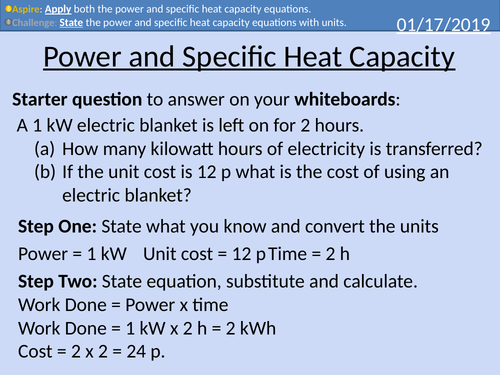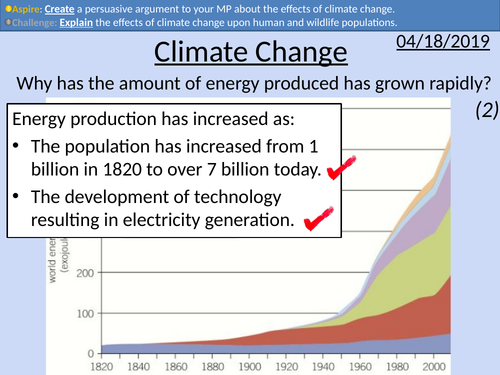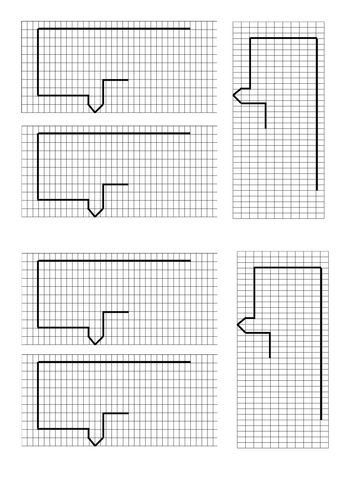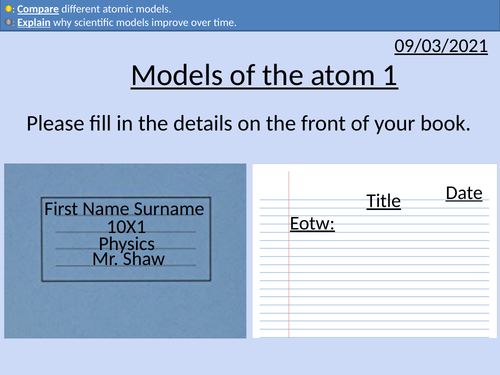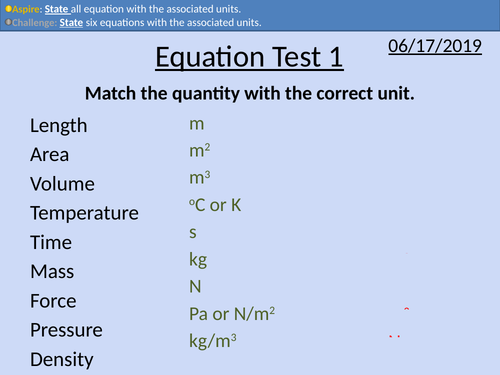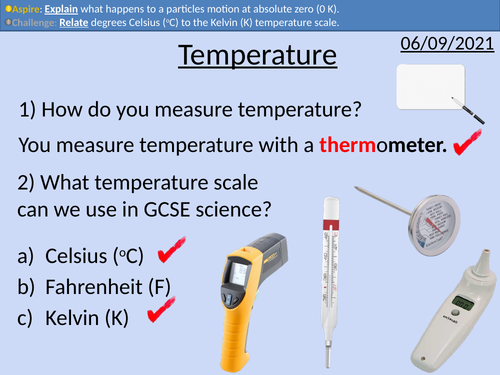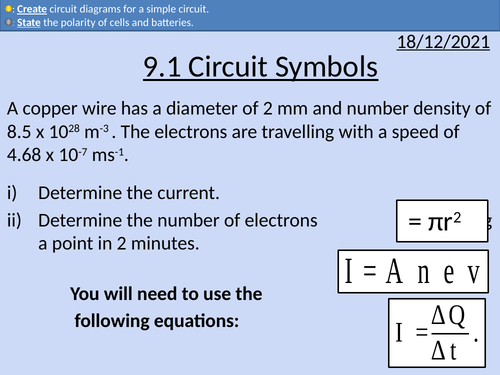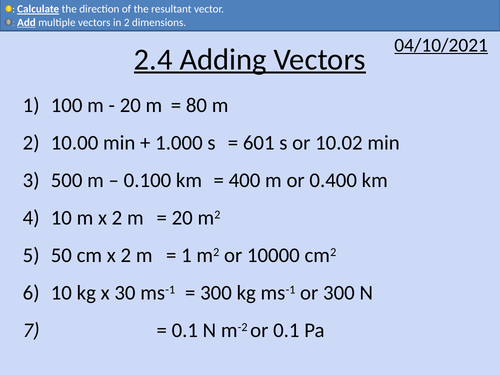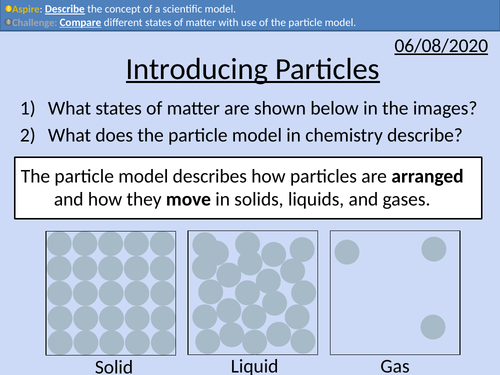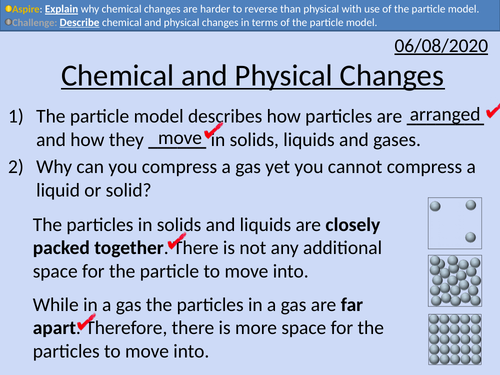484Uploads
144k+Views
63k+Downloads
All resources

GCSE Physics: Power and Specific Heat Capacity
This presentation covers OCR Gateway Physics 9-1 P7.2.3 Power and Specific Heat Capacity.
• Energy Transfers
• Equations and units
• Worked Exam Style Question
• Student questions with numerical solutions

GCSE Physics: Introduciton to Physics
This presentation covers diversity in physics both within the physics community and also with the breadth of what is classified as physics. It contains class activities, a video, and also a research task which could be completed as a class task or as set homework.

GCSE Physics: Electricity and Subatomic Particles
This PowerPoint presentation with worked examples and student questions covers:
• Atoms and the particle model for solids, liquids and gases
• Subatomic particles and the property of charge
• Structure of a metal
• Explanations of the Van de Graff and Lightning.

GCSE Physics: Climate Change
This PowerPoint presentation with worked examples and student questions covers:
• Types of greenhouse gases – carbon dioxide, methane, nitrous oxide, and water vapour.
• Greenhouse effect with activity
• Class discussion on news report of effects of climate change
• Extended writing task with student friendly mark scheme and scaffolding
• Data analysis task
• Explanation of data collection of CO2 levels
Bundle

GCSE Physics: Physics on the move
This bundle of resources contains 12 lessons for OCR GCSE Physics: Physics on the move.
This is a perfect set of lessons to start your GCSE physics course in year 9 as each lesson builds from the last and doesn’t presuppose any other GCSE physics knowledge.
Scientific definitions from working scientifically
Maths skills and rearranging equations
Planning Experiments
All lessons have worked examples, questions for students, and plenary activities.

GCSE Physics: Balanced Forces
This PowerPoint presentation with worked examples and student questions covers:
Balancing forces with vectors
Accelerations and resultant forces

GCSE Physics: Constructing Circuits
This PowerPoint presentation with worked examples and student questions covers:
• Constructing Series Circuit
• Constructing Parallel Circuits
• Analysing results for Potential Difference
• Analysing results for Current
• Clear resource list, diagrams and photos to aid teaching.

GCSE Physics: Efficiency and Sankey Diagrams
This PowerPoint presentation with worked examples and student questions covers:
• Definition of efficiency
• Analysing and constructing Sankey diagrams
• Using the efficiency equation
• Rearranging the efficiency equation

GCSE Physics: Development of the Atomic Model 1
This presentation includes:
What is a scientific model
Why scientific models change over time
The Ancient Greek Model
John Dalton’s Model
Thomson’s Plum-Pudding Model

GCSE Physics Equation Tests
Included are 9 lessons with tips on how to learn the equations for GCSE Physics.

GCSE Physics: Temperature Scales and Changes.
This presentation covers:
Celsius and Kelvin temperature scales
Physical and Chemical Changes
Absolute zero

OCR AS level Physics: Circuit Symbols
OCR AS level Physics: Circuit Symbols is a part of the Module 4: Electrons, Waves, and Photons.
Presentation come with worked examples, solutions and homeworks.
All circuit symbols required for OCR A level physics
Polarity of cells and batteries
Electron flow and conventional current

OCR AS level Physics: More Vectors
OCR AS level Physics: More Vectors is a part of the Module 2: Foundations of Physics
Presentation come with worked examples, solutions and homeworks.

OCR AS level Physics: Derived Units
OCR AS level Physics: Derived Units is a part of the Module 2: Foundations of Physics
Full lesson PowerPoint with worked examples and homework with complete worked answers.
Indices Notation
Converting from Celsius to Kelvin.
Determining base units from derived units.

OCR AS level Physics: Adding Vectors
OCR AS level Physics: Adding Vectors is a part of the Module 2: Foundations of Physics
Full lesson PowerPoint with worked examples and homework with complete worked answers.
Adding vectors in 1 D
Adding vectors in 2 D
Vector triangles
Using Pythagoras’ theorem to determine the magnitude
Using trigonometry to determine the direction

OCR AS level Physics: Newton's second law
OCR AS level Physics: Newton’s second law is a part of the Module 3: Laws of Motion and Momentum. Presentations come with worked examples, solutions and homeworks.

GCSE Chemistry: Introducing Particles
This PowerPoint presentation with worked examples and student questions covers:
• Solids, liquids, and gases
• Scientific models as a concept

GCSE Chemistry: Chemical and Physical Changes
This PowerPoint presentation with worked examples and student questions covers:
• Differences between physical and chemical changes
• Explain why physical changes are generally easier to reverse

GCSE Chemistry: Isotopes and Ions
This PowerPoint presentation with worked examples and student questions covers:
• Definitions of elements, isotopes, and ions
• State mass number, atomic number, and chemical symbols
• Calculate the number of neutrons
Bundle

GCSE OCR Chemistry: P1.2 Atomic Structure
All resources for P1.2 GCSE OCR Chemistry Gateway 9-1 Triple and combined (Higher and Foundation) is covered in this material.
Includes:
Atomic Structure
Isotopes and Ions
Developing the Atomic Model

